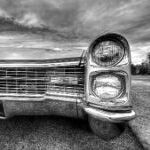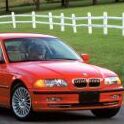Today's electric vehicles (EV) all have battery management systems, these systems are either the old 400V system such as Mercedes-Benz uses or new 800V systems that General Motor and Hyundai / Kia uses. Depending on the size of the EV such as a subcompact where you have 66lbs of wiring from the battery pack to the controllers or a full-size EV where you can have 198lbs of wiring or more, wiring is an area that contributes mass to the overall weight of the EV.
LG Innoteck has announced their latest management system, a wireless battery management system (BMS).
Why is this such a big deal some would ask.
LG Innotek BMS Advantages
- Industry First 800V wireless battery management system (BMS)
- BMS combines the essential components for wireless communication into one module that is compatible with all communication chips.
- LG BMS implements an advanced inspection system for checking the communication performance, enhancing the convenience of its customers.
Lets start this off with a definition of BMS or Battery Management System: BMS is an essential component for electric vehicles that monitors the voltage, current, temperature, etc. of a battery in real time to optimize the performance and life span of the battery. When the BMS receives data from a battery cell, the electronic control unit (ECU) of the vehicle controls the power input/output according to the state of the battery cell. Most of the electric vehicles produced up to now have wired BMS’s on them. Multiple BMS’s are connected via copper cables (wire harness) inside a battery pack. Because of this, the cables and connectors occupy a significant portion of the battery pack's volume and weight.
The key advantage of this wireless BMS system is the reduction of weight which is estimated to be as little as 66lbs of wiring in a subcompact EV to 198lbs in a full size EV. Everyone has complained about the bloat of EVs weight. This is the first solution that helps to reduce EV weight.
LG Innotek developed this wireless BMS solution using Radio Frequency (RF) communication modules. Some would say big deal as we already have wireless stuff. Others will be excited to learn that once you remove all that copper wiring, you gain space throughout the EV. Bigger yet is that the space you gain 10-15% increases the battery pack size and or gives additional space for added flexibility of battery pack design, battery pack structure and more.
OEM adoption of a wireless BMS enhances the reliability of the EV still further. Cable or connector failure due to vehicle vibration is completely removed. This further increases reliability due to the assembly of battery packs can be totally automated by the reduction of battery cable connections allowing for further cost reductions in building EVs.
Charging duration decreases as the voltage increases, all Auto OEM's have stated they will move too or are going to build on an 800V system for their EVs and thus they now have two options, the original wired BMS that LG has been building since 2020 or the new wireless BMS system starting today in 2023.
Originally BMS systems were made up of multiple PCB boards of individual components, requiring more assembly and testing time for a finished BMS product. LG Innotek applied their decades of wireless knowledge in other products, especially RF communication to build a high-precision, high-density, multi-layer board. The RF communication module is composed of a four-layer board with dozens of wireless communication components, densely integrated into a single board.
LG Innotek designed a global RF communication module to work with their BMS module so it is compatible with all types of communication chips, allowing ease of integration by all Auto OEMs.
LG Innotek has established a simulation, virtual inspection system to ensure inspection of the wireless BMS modules pass all required inspections for OEMs.
Mass production of the Wireless BMS is estimated to start early 2024. Current prototype evaluation by Auto OEMs is ongoing now to allow testing of the system for roll out into production EVs at the same time the wireless BMS system goes into mass production.
LG Innotek has also stated that the Wireless BMS system will be used as a base starting point for an 800V EVCC or Electric Vehicle Charge Controller which is expected to be available soon after production of the BMS system. BMS and EVCSS market needs are expected to grow to significantly by 2030.





-3707742431.jpg.06edf8e14f4ccf35c60d4774a543cc11.jpg)


Recommended Comments
Join the conversation
You can post now and register later. If you have an account, sign in now to post with your account.
Note: Your post will require moderator approval before it will be visible.